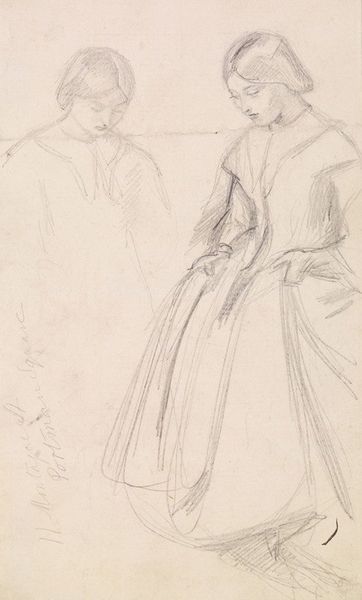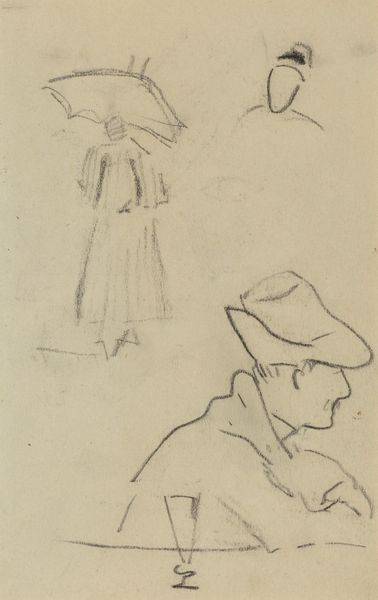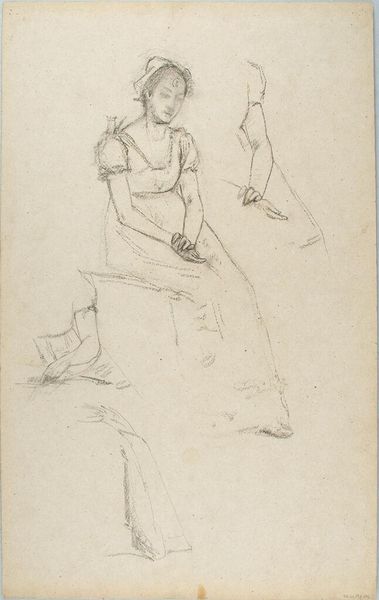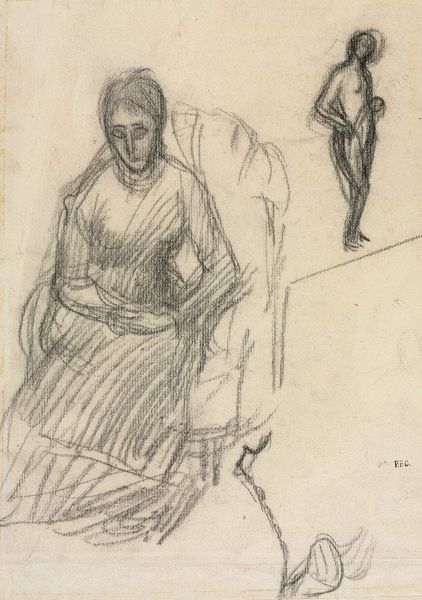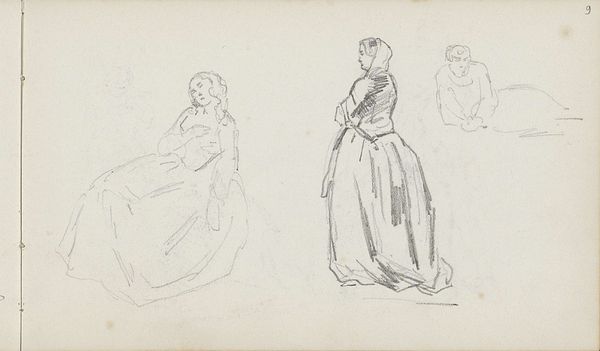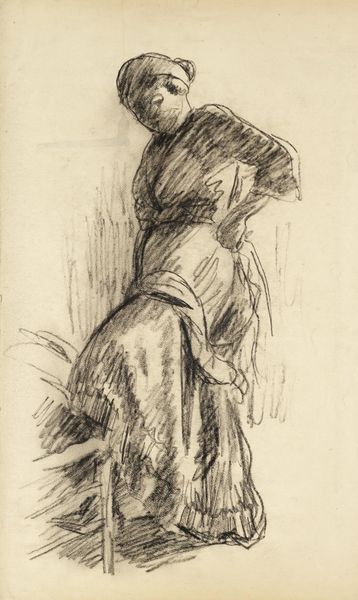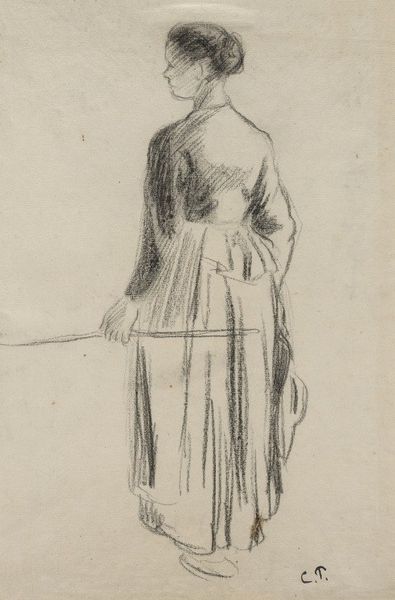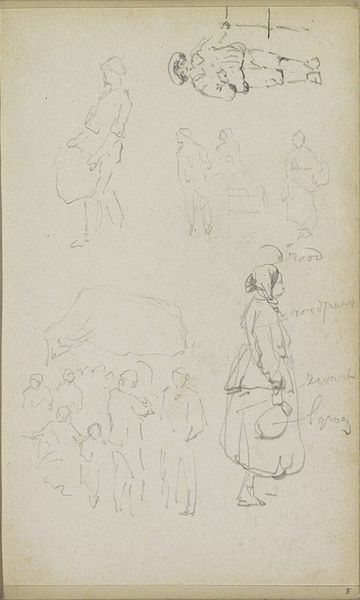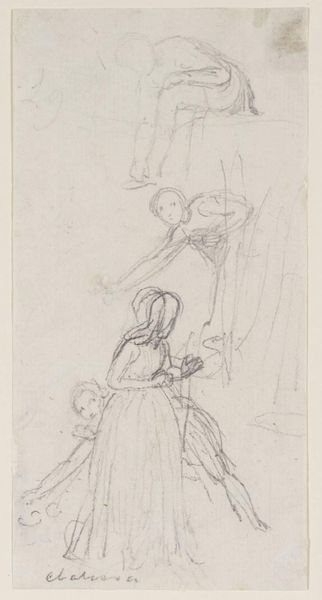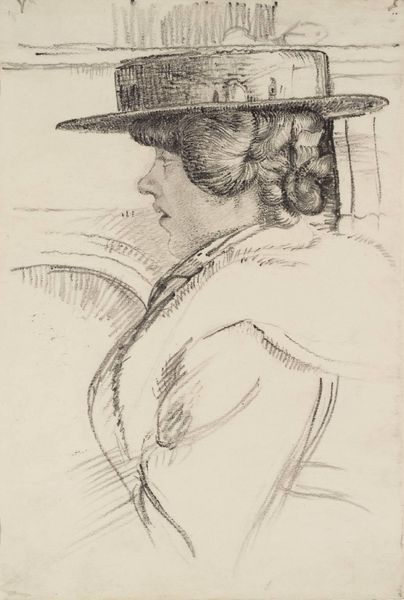
Copyright: Public Domain: Artvee
Curator: This delicate pencil drawing is titled "Thomas Hood's Ruth – Two Figure Sketches," created by Sir John Everett Millais between 1855 and 1858. The medium is quite simple, just pencil on what appears to be laid paper, but the effect is really quite lovely. Editor: It feels so ephemeral, almost as if I might blow it away. There's a tentative, dreamy quality, especially in the rendering of the woman’s face. Curator: That ephemerality is interesting, isn’t it? The visible process is important. It isn't meant to be a polished product but rather a step in the artist's thought process. Millais seems to have been exploring poses, testing the waters, rather than aiming for perfection. You see how the materiality of pencil lends itself to easy revision, light and shadow in quick succession. Editor: Exactly! There’s an inherent honesty to a sketch. You’re seeing the artist's mind at work, the very process of creation. The romanticism of the figure is apparent with soft rendering; yet, there's an element of detachment too. Is she longing for something, or simply lost in her thoughts? Curator: Perhaps that's where Thomas Hood's poem "Ruth" comes in. He explores the life of someone toiling in the field and what can easily be a reference to social class and consumption through romanticizing this life, don’t you think? And then Millais gives it his Victorian treatment with aesthetic poses of ideal femininity, complete with hats! I do believe he's commenting on an industry through the act of portraying them as figures. Editor: Absolutely. Hats were no random details back then—or are they even today? A whole visual language coded through material and form to denote station, aspirations. This also humanizes an idea. You look at those loose strokes of pencil, forming clothing that these people may well be living in day to day, and yet… beauty, yes, it finds you anywhere. Curator: That beauty, indeed! It comes from an artist willing to engage with everyday realities. It shows how pencil on paper may reflect ideas that may, in turn, change a society. It brings together themes that we still encounter in today's society. Editor: It's fascinating to consider how these lines from a 19th-century pencil still have the ability to reach into and tickle a 21st-century imagination!
Comments
No comments
Be the first to comment and join the conversation on the ultimate creative platform.
